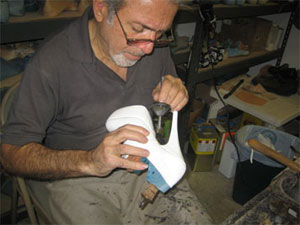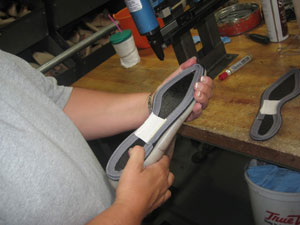Shoemaker
Tasks & duties

Shoemakers may do some or all of the following:
-
design shoes
-
draw up patterns using designs
-
grade patterns for different size shoes
-
select the materials to be used
-
cut out shoe pieces using a machine press or a hand knife
-
hand and machine sew pieces together to form the upper parts of shoes
-
put in eyelets, zips and buckles used to fasten shoes
-
pull the upper part of the shoe over a model of a foot to form the shape
-
attach soles
-
clean and polish shoes
-
make shoes to order
Skills & knowledge

Shoemakers need to have:
-
knowledge of footwear design and styles
-
knowledge of the structure of the foot
-
an understanding of the processes involved in footwear manufacturing
-
knowledge of the different parts of a shoe
-
knowledge of the materials that can be used in footwear
-
skill using and caring for tools and machinery used in shoemaking
-
sewing skills
-
an awareness of safe working practices
Some shoemakers also need to have pattern-making skills.
Entry requirements
There are no specific requirements to become a shoemaker, as skills are gained on the job.
Secondary education
There are no specific secondary educational requirements, but three years of secondary education is an advantage.
Training on the job
Shoemakers gain skills on the job and through in-house training courses. While working, you can also complete the unit standards for three national certificates in footwear, covering a wide range of shoemaking tasks.
Useful experience
Useful experience for shoemakers includes:
- manufacturing experience, particularly in the footwear, apparel and leather industries
- experience in leather work or shoe repair
- work with machinery
Self-employed shoemakers may also find retail work or work in a small business useful.
For more information, please refer to Career Services.
Document Actions
